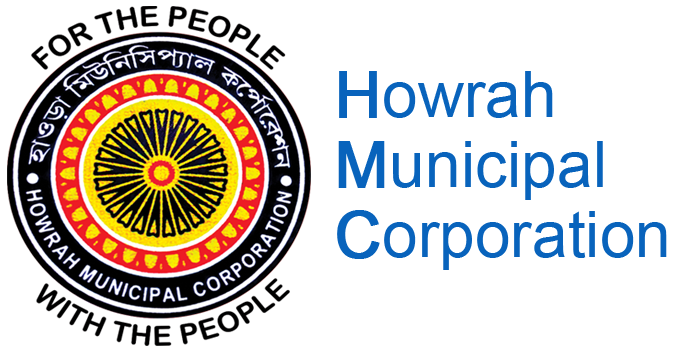
ABOUT HOWRAH MUNICIPAL CORPORATION
Howrah Municipality was established in 1862 and the services to citizen through supply of filtered water started from 1896. During the year 1882-83, Bally Municipality was formed separating it out from Howrah Municipality. Howrah became a Municipal Corporation in 1984 by Howrah Municipal Corporation Act of 1980. The Corporation area is divided into 50 wards and these 50 wards are distributed among 7 Borough offices for ease of operation.
HISTORY OF HOWRAH
The city of Howrah (22º-35'-30" North Latitude and 88º-21'-0" East Longitude) is a riparian city stretching itself about 14 kilometers along the west bank of the river Hooghly (Ganges) with an average width of about 6 km. Howrah is the second largest town within the Kolkata metropolitan Area (KMA), and also in the state of West Bengal. Since long, Howrah has been conceived as a twin city of Kolkata , with the river Hooghly acting as a physical barrier between these two cities. But Howrah has its own history and is much older than Kolkata . The history of Howrah city is said to have taken place over the past five hundred years, as referenced in historical documents, Bengali literature and by early European travellers. Venetian explorer Ceasare Federici was the first european who mentioned a place called Buttor in his journal in 1578 AD which is identifiable with the modern day 'Bator' in Howrah City. The place Bator was even mentioned in 'Manasamangal' poem written by Bipradas Piplai in 1495. The Bengal Council of East India Company, on the accession of the Emperor Farrukshiyar to the throne of Delhi in AD 1713, sent a deputation to him praying for a settlement of the villages 'Salica' (Salkia), 'Harirah'(Howrah), 'Cassundeah'(Kasundia), 'Ramkrishnopoor' (Ramkrishnapur), and 'Battar'(Betor) to the west of river Bhagirathi and once the settlement was made in favour of the East India Company the places were quickly adopted as exit and entry point of sea fareing business hubs and the modernisation of Howrah city as we know it now, began. The East India Company formed the Hooghly district in 1787 and the whole of present district of Howrah came under the Hooghly district. Howrah was made into a separate district in the year 1843. Howrah Railway Station was established in the year of 1854. After this, the actual industrial development was started in this district. The railway line played an instrumental role in bringing the raw materials from various parts of the country to the factories in Howrah. The flour mills started operating in 1855. The Jute mills soon followed suit and were established in the year 1870. There were as many as 5 mills near the Howrah railway station. The new terminus of Shalimar was constructed in the year 1883. That very year, the Howrah-Shalimar railway section started to operate as well. New industries grew up along this railway section as well. Howrah Municipality was established in 1862 and the services to citizen through supply of filtered water started from 1896. During the year 1882-83, Bally Municipality was formed separating it out from Howrah Municipality. Howrah became a Municipal Corporation in 1984 by Howrah Municipal Corporation Act of 1980. The Corporation area is divided into 50 wards and these 50 wards are distributed among 7 Borough offices for ease of operation.
